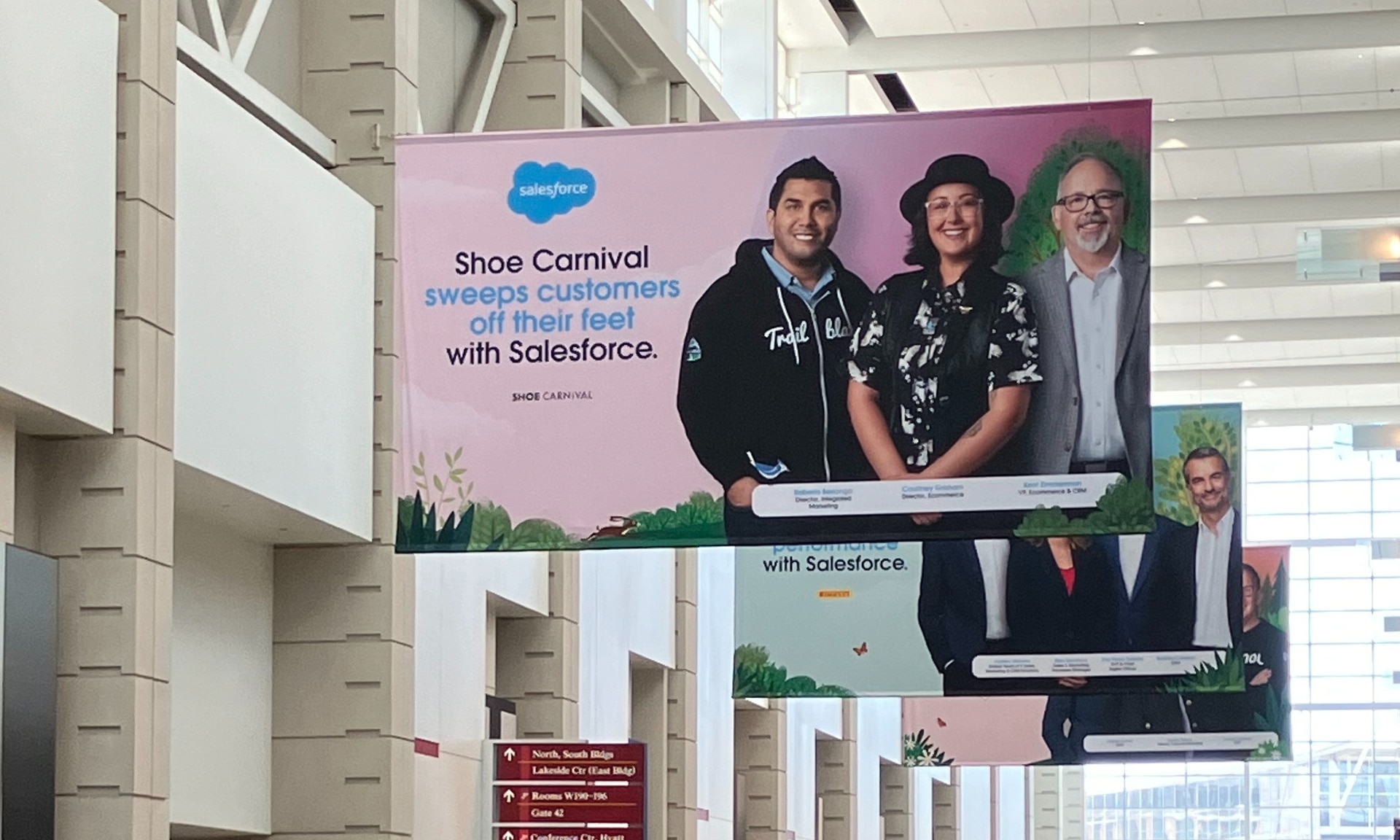MARKETING
How to Hire for and Develop a Successful SEO Department

The author’s views are entirely his or her own (excluding the unlikely event of hypnosis) and may not always reflect the views of Moz.
It’s a highly competitive market for SEO skills at the moment. But as a hiring manager, how do you ensure that you are selecting the right fit for your team, and not just the available candidates? It’s crucial for the well-being of your existing team, your prospective hires, as well as your SEO performance, to hire well.
Who you hire, when, and in what order can come down to several factors. Working in-house may mean your budget for hiring SEOs is limited, so you might need to find someone who ticks a lot of skill boxes broadly, but less deeply. With an agency, or enterprise team, you may have the luxury of investing in a broad roster of talent where each individual is highly-focused.
Skills needed for a well-rounded team
Not every SEO team is created equal. You have to ensure that you’re hiring in a way that suits your organization. To do this, consider what skill sets already exist in your business and where there are gaps.
SEO skills
First, let’s look at some commonly sought-after SEO skills. I’m loosely categorizing these into practical skills (those that are needed specifically for great SEO performance) and soft skills (those that are needed for a good team dynamic).
Practical skills
Practical skills are often the ones focused on more in the hiring process. After all, we want to ensure our new colleagues are proficient SEOs! How you cover these skills might be a mix of staff, freelancers, and agency support.
Soft skills
As important as practical skills are the “soft” ones. These are the skills that are interpersonal and can help your team be efficient and collaborative.
Adjacent skills
There are other skills that, whilst not strictly SEO skills, can help your team to function at a higher efficiency. These adjacent skills are often rolled-up into SEO skills, although it’s debatable as to whether every SEO should have an in-depth grasp of them, or merely know how to work alongside those that do.
These skills are by no means a comprehensive list, but they show you the core elements that your team will need to comprise.
How to assess your team’s skills gaps
Before looking at whether you need to hire new team members, or how to upskill the current ones, you need to look at where the skill gaps are.
If you work closely with the SEOs in your company, you’ll likely already have an idea of where their strengths are, or the areas of SEO that they naturally gravitate towards. Perhaps you have that one person on the team who is always asked the technical questions or is the go-to for help with E-A-T issues.
Determining your team’s areas of weakness doesn’t have to be a long and complicated process. Here are some quick methods of getting a good enough picture of where their competencies lie.
Self-assessment
Your team will know their own strengths and weaknesses well. A good first port of call is to ask them to rate their own confidence with the list of skills mentioned above. Ask them to rate their practical experience of them out of 10, as well as their theoretical knowledge out of 10.
By running this exercise you not only see where there may be skill gaps in your team, you’re also helping your colleagues to take stock of their own areas for development. Through this and a robust development plan, you may be able to fill those skills gaps internally without the need to hire.
External assessment
If your team is small, or their manager is not experienced in SEO, you’ll need the help of an external coach to identify skill gaps.
Bringing someone in from outside your company will remove any bias in assessing the availability of necessary skills on your team. You could consider a career coach, but given the specialism, you may benefit more from bringing in an SEO consultant with management experience.
Peer assessment
A third way to get a good understanding of where there are skill gaps is to ask your team to identify them. They will have a good idea of each other’s strengths and weaknesses and where they would like to see additional resources focused.

Identifying other useful skills and experience
Your team may have experience tangentially related to the work they are doing for you that actually helps them to be better SEOs. When you’re considering the skills gaps in your company, don’t forget to encourage your team to look at these skills that weren’t necessarily developed through work.
Experience gained outside of work
Consider their hobbies and volunteer work. You may be looking to hire externally for the next people manager role because no one on your team currently manages their colleagues. Could a candidate have developed those skills through their outside lives?
Perhaps you have a scout troop leader in your team, sports coaches, or voluntary industry mentors. These skills might not be immediately apparent from a CV or your experience of them at work, but dig a little deeper and you may find the missing skillset or experience you need for your department.
Don’t discount the valuable skills and experiences gained outside of a workplace setting, especially for candidates or team members who are more junior. It may be that they have not had the opportunity to showcase those skills in their careers so far but they excel in them outside of work.
What to do once the skill gaps have been identified
Once you have a better idea of where your team’s skill gaps lie, you have to decide whether to hire, train, or contract out those skills.
You may be able to grow your existing colleagues’ skills to bridge that gap with formal SEO training or like those from Moz Academy. This can also be a great way of keeping your team engaged, with the added bonus of professional certifications.
When considering training, be sensitive to life commitments. SEO is an industry that seemingly rewards “hustle”. However, a lot of people don’t want to carry out more work outside of their contracted hours, even if it is for themselves. Don’t expect your team to always be working to improve their knowledge and skills outside of work. Instead, if you want to build a world class SEO team, give plenty of space within work hours for your team to develop their skills.
If the skill gaps are too significant, you may need to bring that resource in. One way of doing that is through agencies or freelancers, but this isn’t always a cost-effective long-term solution.
Finally, you could hire someone new. Here’s how.
Create a job specification
Use the skills your team is lacking as a foundation for your new role specification. Create a description and list of capabilities around these core skills. For example, if you have identified a need to bring more technical expertise into your team, create a role that focuses on that.

Remember that it’s hard to hire an SEO who is a phenomenal all-rounder. Most of us have our leanings towards tech, content, digital PR, etc. That said…
Be careful of being too narrow
Don’t be overly prescriptive in your job specification, either. Consider whether you really need candidates to have over two years’ of experience with Python. Does this new person have to have the ability to code in HTML, JavaScript, and CSS, or do they just need to know how these languages impact SEO? Do you need someone with copywriting skills, or can they just be great at communicating briefs?
If you create a very rigid “wishlist” of necessary competencies or experience you may miss out on applicants who have the right skill set for the role.
Benefits of overlapping skill sets
There can be benefits of doubling up on competencies within a team. For instance, if you’ve noted that you need a great on-page SEO but you’re getting applicants who also have a technical background, consider that a plus even if you already have great technical SEOs in your team. There’s always more that we SEOs can learn, and bringing in people who have similar specialisms, but different approaches, can help deepen our competency.
How to interview SEOs
There are many, many guides on how to conduct great interviews. What I want to focus on here are the nuances of interviewing SEOs.
In my experience, interviews for SEO roles tend to come in two main flavors:
What combination of these, the number of stages involved, and who sits in on them differs greatly. But is this the optimum way to assess the competencies of an SEO?
The interview process
How you structure your interview should depend on a number of factors including:
For instance, an SEO with two years’ experience may require a different set of questions to that of a managerial candidate with 10 years’ experience.
There are a variety of interview techniques and activities you can use to better gauge the suitability of a candidate for a role and help them to understand if your company is the right one for them.
The formal interview
Most of us will have taken part in a formal meeting with a prospective employer. It can be a good way of quickly determining if you have rapport, and in theory, allow for both the candidate and interviewer to dig into skills and experience.
In reality, however, it’s quite a flawed method of assessing fit. Many people simply do not excel within the high-pressure situation of a one-on-one or panel interview. Depending on the role they are applying for, it could be the last time they are expected to perform in that set-up, so why interview them like that? Having a great set of interview questions can help, but to understand an individual’s capability, you may need to dig deeper.
That said, some SEO roles, in particular client-facing account or project management, will require meetings that are actually quite similar in nature to an interview. The formal interview process might be a good stage of assessment for these types of roles.
The informal chat
A less formal method for finding out information about a candidates’ skills and experience is through a more casual discussion. This interview style can be much more laid-back, giving as much space to the candidate to ask questions as the interviewer.
This can be a good way of assessing how a candidate might perform in team meetings, liaise with outside agencies, or communicate with suppliers. For roles that don’t necessarily require sales pitching or formal presentations, then an informal chat is a better route to discern a person’s fit for a job.
Homework task
Often a second or third stage of the interview process is the take-home task like auditing a website and presenting findings, or pitching a marketing project. The idea of the homework is to give candidates some time to think through a problem and work towards their best solution. It allows an interviewer to gain insight into how a candidate might actually go about a real-life SEO issue.
This is a tricky stage to get right, though.
In practice, the at-home element of these tasks can often take a candidate a long time to prepare. Given that they’re likely in several other interview processes at the same time as yours, they may be working well into their evenings and weekends to prepare for all of these tasks.
In addition, these tasks often require access to SEO tools. It’s possible to get free trials for some, but they’re limited in functionality and by trial length, or a candidate may not feel comfortable using their existing employer’s tool licenses to complete work for an interview. It will be better if, as part of this stage, you offer candidates data dumps to work from or give them temporary access to the tools they need to use.
There is also the risk on the candidate’s side that they may well come back with some excellent work and still not get hired. They will have sunk time, energy and expertise into an SEO situation just to have the interviewers say no. In some, unfortunately not atypical cases, the interviewing company may go on to use the candidate’s work even though they haven’t been hired.
On the side of the interviewing company, you also don’t really know how independently the candidate worked on the project. Look at SEO focused forums and subreddits and they are awash with people asking advice on how to best complete a task or present their findings for interviews.
A further complication of these stages is that they often test skills that aren’t necessarily needed for the role. In addition, the tasks usually need to be shared back in the form of a presentation and Q&A. As we’ve already discussed, if presentation skills are not crucial to your role, you may not be assessing the right competencies. After all, a candidate might have found a great solution to an SEO problem, but is this the right format for finding out how they arrived at it if presenting makes them nervous?
Live task
An interview assessment method that is common in the engineering and development world, but hasn’t really made it across to SEO, is the live task. Candidates can be given a problem to solve, or a website to audit, and asked to work on it whilst they are in the interview. This way, they can easily be provided with the tools they need, the risk of them asking for external help is mitigated, and they aren’t required to spend additional time outside of the interview to prepare for it.

It can, however, be quite a daunting prospect for the candidate. To make them more comfortable, consider giving them the site or rough outline of the sort of task they will be working on before the interview. Also make sure to give them the freedom to turn their, and your, cameras and microphones off if on a virtual interview, or for you to leave the room if it is an in-person interview. No one likes being stared at as they work!
Peer interviewing
To ensure it’s not just you getting to know the candidate, but that the candidate gets to know your company well, you could consider including a peer interviewing option.
Here, a candidate gets to sit with a selection of their potential colleagues and discuss what it’s like working at your company. It’s crucial that the meeting does not contain managers or anyone involved in the hiring, so the candidate can feel encouraged to ask the probing questions they want in order to find out if the company is the right fit for them.
Interviewing at the right level
It can be tough to ask the right questions of candidates who are at a different stage of their SEO career than you. If you’ve been in the industry for several years, it might be difficult to identify what someone of their experience should know and be able to achieve. Equally, if you’re not an SEO yourself, but involved in hiring one, you may not know enough about the discipline to really gauge the extent of your interviewee’s knowledge. It’s important to identify the depth of skills you would expect someone at the level you’re hiring for to have. One way of doing this is by looking at the types of problems you would want that person to solve. What skills would need to be present for them to do that? Then look at weighting those skills. Which are absolutely necessary for getting the job done and which would aid to a degree.
If you have little experience in SEO yourself you may need to consult with members of your SEO team, or look to an external advisor to help you.
Be clear about the role’s level
You don’t want to discount an eager, quick learner from a job that only requires a basic understanding of SEO because they didn’t interview as well as your last hire who is now a manager.
Similarly, a candidate may really impress you with their expertise and experience but is the role too basic for them and they are likely to want to advance on from it quite quickly?
Level appropriate questions
To make sure you’re giving your candidates the best chance to shine in their interviews, here are some ideas of questions for each of the main skill sets and how they can be tailored for junior, middleweight, and senior roles.
On-page optimization
Junior
How would you go about optimizing a page to maximize its exposure in the SERPs?
This type of question allows for the fact the candidate might not have direct experience of carrying out this activity themselves, but tests their theoretical knowledge and approach to problem-solving.
Middleweight
Give me an example of when you used on-page SEO to improve rankings of a page. What did you do, why did you do it and what were the results?
This sort of question allows for the candidate to show their direct experience with on-page SEO but does not require them to show responsibility for the strategy behind it. They can show their practical knowledge and also hint at the reasoning behind the activity.
Senior
Give me an example of when you developed and employed a content pruning strategy. What was the strategy, why did you develop it and what was the outcome?
This type of questions allows the interviewer to test the candidate’s strategic reasoning as well as their ability to identify the best methodology for achieving results, and how they analyzed those results.
Technical SEO
Junior
What would you look for when carrying out a technical SEO audit?
This type of question helps to identify whether the candidate has a theoretical knowledge of broad technical SEO activity.
Middleweight
Give me an example of when you’ve encountered a duplicate page issue, what caused it, and how you resolved it.
This type of question begins to examine the candidate’s practical experience in technical SEO and can help you to identify if they have a working knowledge or merely theoretical knowledge of technical SEO.
Senior
Give me an example of a deindexation issue you encountered, how you identified it, and how you rectified it.
This type of question will give the candidate space to demonstrate their end-to-end practical experience of serious and complex technical SEO issues. It will likely allow them to show their experience of setting up alerts and automations as well as how they think through technical problems, communicate those to other teams and work to find a resolution.
Digital PR
Junior
What’s a campaign that you’ve seen recently that you admired, and what would you have done differently?
This tests the candidate’s ability to iterate on ideas without expecting them to have launched campaigns themselves yet.
Middleweight
Give me an example of a campaign that you launched that wasn’t initially successful, and what you did to improve it.
This tests a candidate’s strategic thinking, ability to adapt to the needs and wants of the media as well as giving examples of their work.
Senior
What would be your strategy for launching a campaign to generate links in a highly regulated industry like gambling? How have you overcome struggles with regulated or hard-to-represent industries in the past?
This type of question assesses a candidate’s ability to create a well-considered strategy within a set of limiting boundaries. It also assumes prior experience of more complicated campaigns.
Analytics
Junior
If the company’s core KPI is conversions, what metrics would you look at to see if SEO is helping towards that goal? What additional information might you need?
This question does not assume the candidate has had experience with onboarding a new analytics account before but tests their theoretical knowledge.
Middleweight
What is your process for ensuring data integrity in a new analytics account?
This sort of question will allow the candidate to show that they are conscious of how data can become compromised and their process for ensuring clean data. It will also show whether they understand how they can compromise data themselves.
Senior
Tell me about a time when you deployed a complex tracking solution, your steps, and the reporting you were able to produce through it.
This type of question will explore the depth of experience a candidate has in more complicated analytics and tracking solutions.
Strategy
Junior
What do you feel are the key components to a successful [SEO/digital PR] strategy?
This type of question will test the candidate’s theoretical knowledge of creating strategies and will empower them to talk about their knowledge of auditing, measuring, reporting, and iterating.
Middleweight
Give me an example of a strategy you created that yielded great results, the steps you implemented, and the outcome.
This question allows the candidate to show their own experience of creating strategies and gives them the opportunity to discuss one they are particularly proud of.
Senior
Give me an example of a strategy you created that was not successful and what you did as a result. What would you do differently next time?
Asking this sort of question explores the candidate’s ability to fail well, including how they recover and what they have learned from that experience.
Project/account management
Junior
How would you manage your time if you were asked to complete multiple tasks with the same deadline, but only had time to complete one?
This question allows the interviewer to see how a candidate would handle a situation they are likely to encounter a lot early on in their career. It assesses the candidate’s time management and communication skills.
Middleweight
Give me an example of a time when you had conflicting deadlines and how you managed the expectations of the stakeholders involved?
Through this question an interviewer can get an idea of how a candidate has approached scheduling conflicts and stakeholder management in practice when facing that pressure, rather than what they would hope they would do in theory.
Senior
Give me an example of a project that required significant scope changes and how you handled the communications, time management, and activity allocation considering the changes
This question assesses a more experienced candidate’s approach to project management when there are multiple factors that are impacted by scope change. It allows them to discuss their line management approach, resource allocation and stakeholder communications.
Removing bias in hiring
The SEO industry has typically had a problem with promoting similar faces in conferences, committees, and within jobs. To ensure that your hiring practices encourage diversity, you should look to remove as much bias from the process as possible.
Nameless CVs and resumes
One way of removing bias is to only pass on anonymized CVs or resumes to hiring managers. This way, there is less risk of any implicit bias towards specific naming conventions affecting the hiring process.
It needs to be mentioned, of course, that this is just papering over a bigger issue, and that any employees in charge of hiring should take implicit bias training.
Bias testing
There are numerous tests available that identify whether your hiring managers have any subconscious bias towards or against people based on various characteristics. One such suite of tests is provided by Project Implicit, a non-profit organization staffed by international researchers with the mission to educate the public about bias. Their tests cover a range of potential bias such as sexuality, disability, and skin color.
Diverse interview panels
Another way of limiting bias is ensuring a diverse group of people are involved in the decision-making. This means your interviewers represent a diverse cross-section of the public, not just your organization.
Consider foregoing CVs or resumes
To make sure you aren’t hiring people based on years of working, rather than the quality and breadth of the experience they have gained, you may consider doing away with the CV altogether. Instead, candidates can answer a series of questions when applying that assesses their competency for the role.
This can stop hiring managers from weighing suitability based on former job titles (of which the SEO industry has no standard), length of time at previous roles, or impressive-sounding brands. Instead, candidates will be invited to interview based on their aptitude.

Hire people with little experience but great potential
We all had to learn somewhere. At one point in our careers, a manager took a chance on someone with relatively little SEO experience and let us loose on a website. In order to help the industry grow and adapt, it’s imperative that we continue to hire in and train up entry-level SEOs. However, this isn’t something that should be done lightly, and you should always have a good support system in place.
What to watch out for when hiring
There are a few things to be mindful of when hiring SEOs in the current climate.
The reasons behind short periods of employment
There are several reasons why candidates only worked for a year (or less) at a role. Traditionally, short periods of employment have been treated with suspicion, but ours is a flexible and dynamic industry where staying for years and years in a role doesn’t always make sense. There’s also the COVID-19 pandemic to consider, as several companies went through severe hiring and working disruptions.
In addition, it’s important to encourage employees to find the best possible fit for them, which may entail some movement between jobs. Be careful not to dismiss a candidate purely because of short stints in previous positions or companies.
Values fit
As mentioned above, you’ll often want a “culture” type interview round for new hires. The idea being that it can help to determine whether a candidate would fit in well with an existing team or structure.
This isn’t always a great idea, though. If we’re looking to promote diversity in hiring and also bring new ideas and approaches into our teams, then we should hire for values fit and not culture fit.
Culture fit is expecting a candidate to fit in with the existing way of doing things. Values fit is making sure they agree with the core principles on which your business is based, but allowing for differences in approaches, personality, and behaviors.
Conclusion
It’s a tough market to hire in at the moment, because SEO skills are very in-demand. Make sure you aren’t overlooking great candidates or even existing colleagues when trying to build your perfect SEO department.
Be clear about what you need from your team and look both internally and externally for that skill set. Remember to hire for potential and not necessarily for their current experience level, and don’t rule out candidates unnecessarily or arbitrarily.
There is a lot of movement in the market at the moment allowing for amazing opportunities. Make sure you’re setting yourself and your future team up for success.
MARKETING
YouTube Ad Specs, Sizes, and Examples [2024 Update]
![YouTube Ad Specs, Sizes, and Examples [2024 Update] YouTube Ad Specs, Sizes, and Examples](https://articles.entireweb.com/wp-content/uploads/2024/06/YouTube-Ad-Specs-Sizes-and-Examples.jpg)
Introduction
With billions of users each month, YouTube is the world’s second largest search engine and top website for video content. This makes it a great place for advertising. To succeed, advertisers need to follow the correct YouTube ad specifications. These rules help your ad reach more viewers, increasing the chance of gaining new customers and boosting brand awareness.
Types of YouTube Ads
Video Ads
- Description: These play before, during, or after a YouTube video on computers or mobile devices.
- Types:
- In-stream ads: Can be skippable or non-skippable.
- Bumper ads: Non-skippable, short ads that play before, during, or after a video.
Display Ads
- Description: These appear in different spots on YouTube and usually use text or static images.
- Note: YouTube does not support display image ads directly on its app, but these can be targeted to YouTube.com through Google Display Network (GDN).
Companion Banners
- Description: Appears to the right of the YouTube player on desktop.
- Requirement: Must be purchased alongside In-stream ads, Bumper ads, or In-feed ads.
In-feed Ads
- Description: Resemble videos with images, headlines, and text. They link to a public or unlisted YouTube video.
Outstream Ads
- Description: Mobile-only video ads that play outside of YouTube, on websites and apps within the Google video partner network.
Masthead Ads
- Description: Premium, high-visibility banner ads displayed at the top of the YouTube homepage for both desktop and mobile users.
YouTube Ad Specs by Type
Skippable In-stream Video Ads
- Placement: Before, during, or after a YouTube video.
- Resolution:
- Horizontal: 1920 x 1080px
- Vertical: 1080 x 1920px
- Square: 1080 x 1080px
- Aspect Ratio:
- Horizontal: 16:9
- Vertical: 9:16
- Square: 1:1
- Length:
- Awareness: 15-20 seconds
- Consideration: 2-3 minutes
- Action: 15-20 seconds
Non-skippable In-stream Video Ads
- Description: Must be watched completely before the main video.
- Length: 15 seconds (or 20 seconds in certain markets).
- Resolution:
- Horizontal: 1920 x 1080px
- Vertical: 1080 x 1920px
- Square: 1080 x 1080px
- Aspect Ratio:
- Horizontal: 16:9
- Vertical: 9:16
- Square: 1:1
Bumper Ads
- Length: Maximum 6 seconds.
- File Format: MP4, Quicktime, AVI, ASF, Windows Media, or MPEG.
- Resolution:
- Horizontal: 640 x 360px
- Vertical: 480 x 360px
In-feed Ads
- Description: Show alongside YouTube content, like search results or the Home feed.
- Resolution:
- Horizontal: 1920 x 1080px
- Vertical: 1080 x 1920px
- Square: 1080 x 1080px
- Aspect Ratio:
- Horizontal: 16:9
- Square: 1:1
- Length:
- Awareness: 15-20 seconds
- Consideration: 2-3 minutes
- Headline/Description:
- Headline: Up to 2 lines, 40 characters per line
- Description: Up to 2 lines, 35 characters per line
Display Ads
- Description: Static images or animated media that appear on YouTube next to video suggestions, in search results, or on the homepage.
- Image Size: 300×60 pixels.
- File Type: GIF, JPG, PNG.
- File Size: Max 150KB.
- Max Animation Length: 30 seconds.
Outstream Ads
- Description: Mobile-only video ads that appear on websites and apps within the Google video partner network, not on YouTube itself.
- Logo Specs:
- Square: 1:1 (200 x 200px).
- File Type: JPG, GIF, PNG.
- Max Size: 200KB.
Masthead Ads
- Description: High-visibility ads at the top of the YouTube homepage.
- Resolution: 1920 x 1080 or higher.
- File Type: JPG or PNG (without transparency).
Conclusion
YouTube offers a variety of ad formats to reach audiences effectively in 2024. Whether you want to build brand awareness, drive conversions, or target specific demographics, YouTube provides a dynamic platform for your advertising needs. Always follow Google’s advertising policies and the technical ad specs to ensure your ads perform their best. Ready to start using YouTube ads? Contact us today to get started!
MARKETING
Why We Are Always ‘Clicking to Buy’, According to Psychologists

Amazon pillows.
MARKETING
A deeper dive into data, personalization and Copilots

Salesforce launched a collection of new, generative AI-related products at Connections in Chicago this week. They included new Einstein Copilots for marketers and merchants and Einstein Personalization.
To better understand, not only the potential impact of the new products, but the evolving Salesforce architecture, we sat down with Bobby Jania, CMO, Marketing Cloud.
Dig deeper: Salesforce piles on the Einstein Copilots
Salesforce’s evolving architecture
It’s hard to deny that Salesforce likes coming up with new names for platforms and products (what happened to Customer 360?) and this can sometimes make the observer wonder if something is brand new, or old but with a brand new name. In particular, what exactly is Einstein 1 and how is it related to Salesforce Data Cloud?
“Data Cloud is built on the Einstein 1 platform,” Jania explained. “The Einstein 1 platform is our entire Salesforce platform and that includes products like Sales Cloud, Service Cloud — that it includes the original idea of Salesforce not just being in the cloud, but being multi-tenancy.”
Data Cloud — not an acquisition, of course — was built natively on that platform. It was the first product built on Hyperforce, Salesforce’s new cloud infrastructure architecture. “Since Data Cloud was on what we now call the Einstein 1 platform from Day One, it has always natively connected to, and been able to read anything in Sales Cloud, Service Cloud [and so on]. On top of that, we can now bring in, not only structured but unstructured data.”
That’s a significant progression from the position, several years ago, when Salesforce had stitched together a platform around various acquisitions (ExactTarget, for example) that didn’t necessarily talk to each other.
“At times, what we would do is have a kind of behind-the-scenes flow where data from one product could be moved into another product,” said Jania, “but in many of those cases the data would then be in both, whereas now the data is in Data Cloud. Tableau will run natively off Data Cloud; Commerce Cloud, Service Cloud, Marketing Cloud — they’re all going to the same operational customer profile.” They’re not copying the data from Data Cloud, Jania confirmed.
Another thing to know is tit’s possible for Salesforce customers to import their own datasets into Data Cloud. “We wanted to create a federated data model,” said Jania. “If you’re using Snowflake, for example, we more or less virtually sit on your data lake. The value we add is that we will look at all your data and help you form these operational customer profiles.”
Let’s learn more about Einstein Copilot
“Copilot means that I have an assistant with me in the tool where I need to be working that contextually knows what I am trying to do and helps me at every step of the process,” Jania said.
For marketers, this might begin with a campaign brief developed with Copilot’s assistance, the identification of an audience based on the brief, and then the development of email or other content. “What’s really cool is the idea of Einstein Studio where our customers will create actions [for Copilot] that we hadn’t even thought about.”
Here’s a key insight (back to nomenclature). We reported on Copilot for markets, Copilot for merchants, Copilot for shoppers. It turns out, however, that there is just one Copilot, Einstein Copilot, and these are use cases. “There’s just one Copilot, we just add these for a little clarity; we’re going to talk about marketing use cases, about shoppers’ use cases. These are actions for the marketing use cases we built out of the box; you can build your own.”
It’s surely going to take a little time for marketers to learn to work easily with Copilot. “There’s always time for adoption,” Jania agreed. “What is directly connected with this is, this is my ninth Connections and this one has the most hands-on training that I’ve seen since 2014 — and a lot of that is getting people using Data Cloud, using these tools rather than just being given a demo.”
What’s new about Einstein Personalization
Salesforce Einstein has been around since 2016 and many of the use cases seem to have involved personalization in various forms. What’s new?
“Einstein Personalization is a real-time decision engine and it’s going to choose next-best-action, next-best-offer. What is new is that it’s a service now that runs natively on top of Data Cloud.” A lot of real-time decision engines need their own set of data that might actually be a subset of data. “Einstein Personalization is going to look holistically at a customer and recommend a next-best-action that could be natively surfaced in Service Cloud, Sales Cloud or Marketing Cloud.”
Finally, trust
One feature of the presentations at Connections was the reassurance that, although public LLMs like ChatGPT could be selected for application to customer data, none of that data would be retained by the LLMs. Is this just a matter of written agreements? No, not just that, said Jania.
“In the Einstein Trust Layer, all of the data, when it connects to an LLM, runs through our gateway. If there was a prompt that had personally identifiable information — a credit card number, an email address — at a mimum, all that is stripped out. The LLMs do not store the output; we store the output for auditing back in Salesforce. Any output that comes back through our gateway is logged in our system; it runs through a toxicity model; and only at the end do we put PII data back into the answer. There are real pieces beyond a handshake that this data is safe.”
-

 WORDPRESS3 days ago
WORDPRESS3 days agoWordPress biz Automattic details WP Engine deal demands • The Register
-
SEARCHENGINES5 days ago
Daily Search Forum Recap: September 30, 2024
-

 SEO7 days ago
SEO7 days agoYoast Co-Founder Suggests A WordPress Contributor Board
-

 SEARCHENGINES6 days ago
SEARCHENGINES6 days agoGoogle Volatility With Gains & Losses, Updated Web Spam Policies, Cache Gone & More Search News
-

 SEO7 days ago
SEO7 days ago6 Things You Can Do to Compete With Big Sites
-
SEARCHENGINES4 days ago
Daily Search Forum Recap: October 1, 2024
-

 SEO6 days ago
SEO6 days agoAn In-Depth Guide For Businesses
-

 AFFILIATE MARKETING5 days ago
AFFILIATE MARKETING5 days agoNvidia CEO Jensen Huang Praises Nuclear Energy to Power AI















You must be logged in to post a comment Login